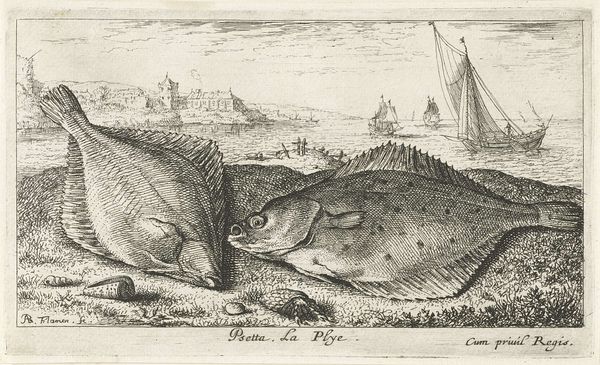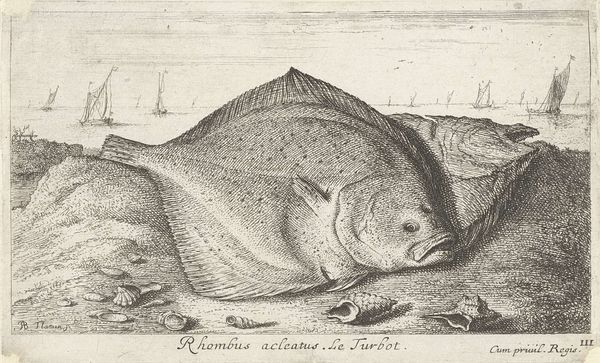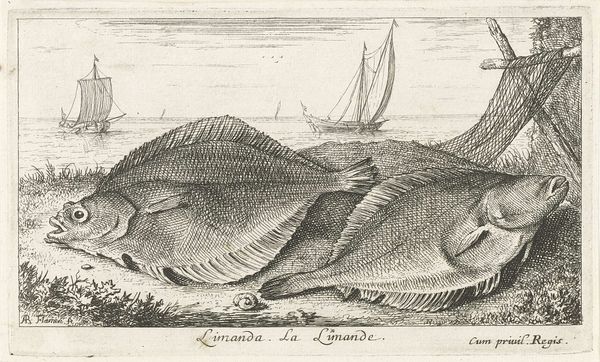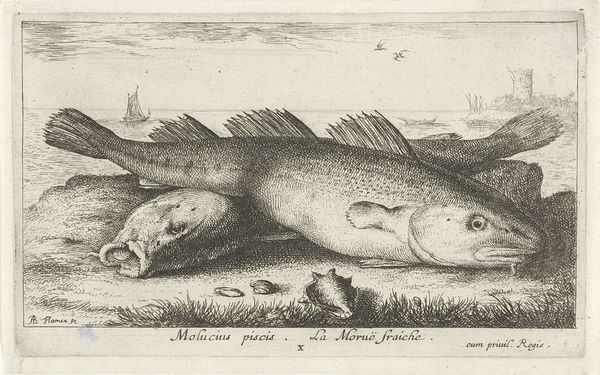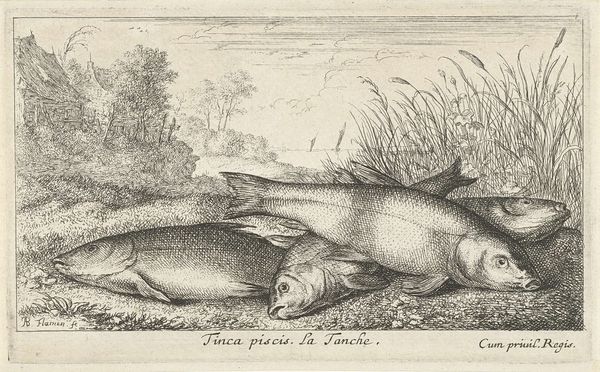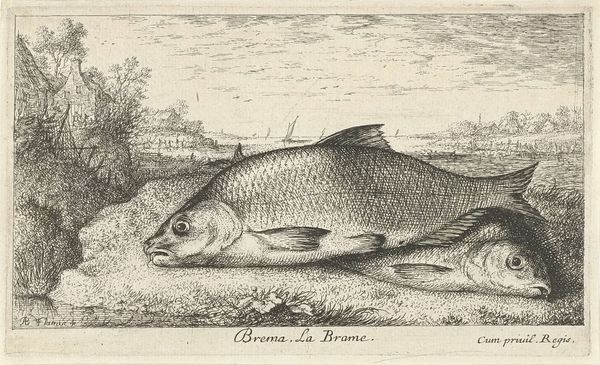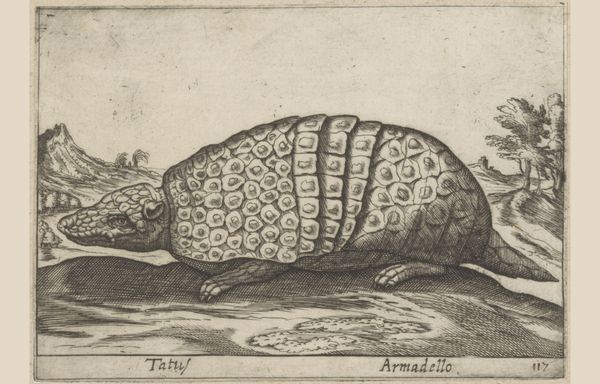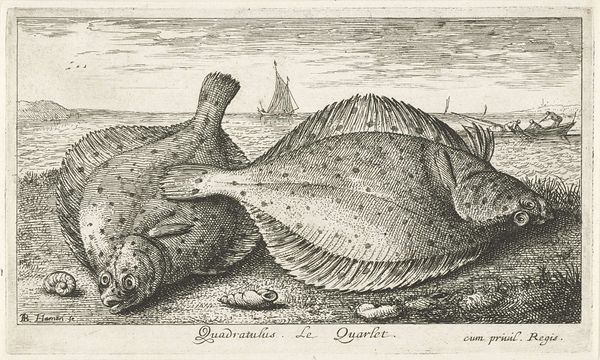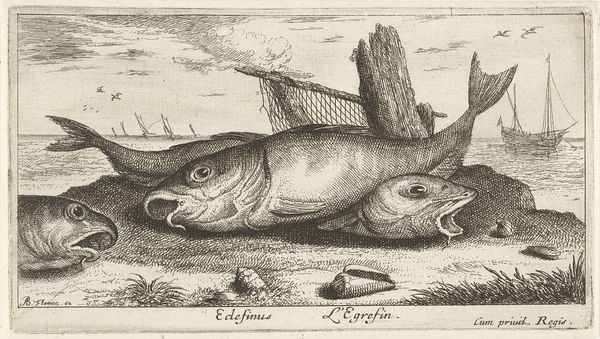
print, engraving
#
baroque
# print
#
old engraving style
#
personal sketchbook
#
line
#
engraving
#
realism
Dimensions: height 107 mm, width 179 mm
Copyright: Rijks Museum: Open Domain
Curator: This is Albert Flamen's 1664 engraving, titled "Drie grieten op het strand"—"Three Flounders on the Beach". Editor: Flounders. Right. The composition feels weighty, earthy. There's an immediate connection to sustenance, labor... and something undeniably fishy. Curator: Tell me more. What do you read into it? Beyond the, shall we say, immediate interpretation. Editor: The meticulous cross-hatching used to depict the scales screams Baroque era. This wasn’t a quick sketch. Each line suggests careful labour. We see that materiality extends beyond the final image to include the intensive engraving process itself. It speaks to early methods of reproduction and dissemination of knowledge through printed image. The inclusion of shells near the bottom also speaks to nature, suggesting value beyond the daily consumption cycle, maybe ornamental? Curator: Good points, the engraving technique really does define the feel, doesn’t it? But the sea itself is a potent symbol, historically linked with voyages of discovery but also to life's vastness. Do the sailboats in the background then perhaps tell of hope, ambition? Editor: True, those boats carry so many connotations. However, I am wondering how those flounders got there. Flamen put great attention in describing what lies at his feet, matter he could literally handle, count and describe. Perhaps that gives clues to his own socio-economical position as an artisan, and perhaps for the average consumers of such prints? How much, or rather how little access to luxury and travel they have? Curator: I see what you're getting at. So you believe that such a naturalist depiction—executed via laborious process that gives such prominence to materiality—could instead be symbolic, representative of its immediate conditions of production as opposed to dreams and spiritual matters? Editor: Exactly. Look at the texture; the grit of the shoreline practically vibrates. This feels more about Flamen displaying craftsmanship than delivering high allegorical meaning or symbolism. What do you think? Curator: Perhaps we're both right to an extent. The tangible process enhances both our material understanding and allows those grander symbolist concepts that connect with our human experience. Editor: So we are at peace then, which perhaps Flamen indirectly sought when representing with such care our daily food.
Comments
No comments
Be the first to comment and join the conversation on the ultimate creative platform.
